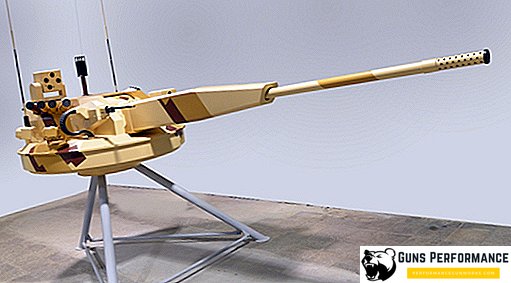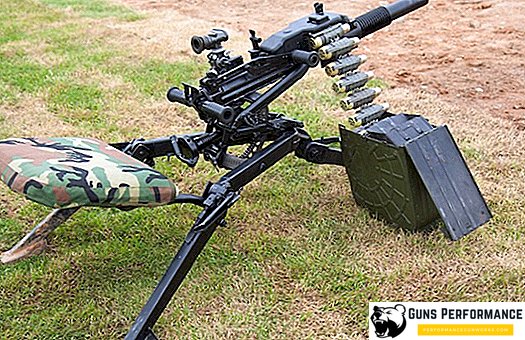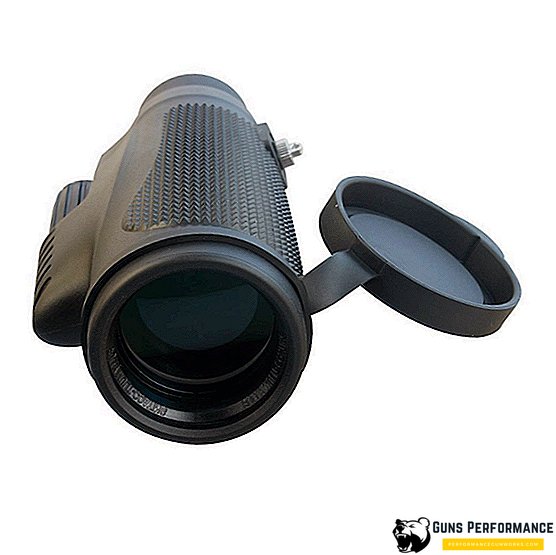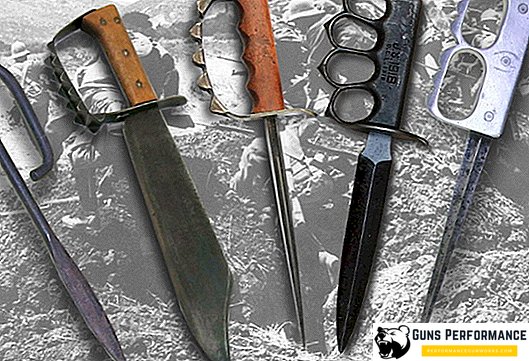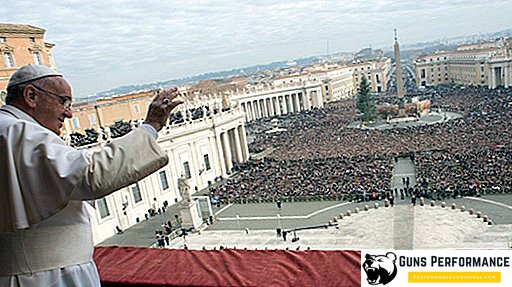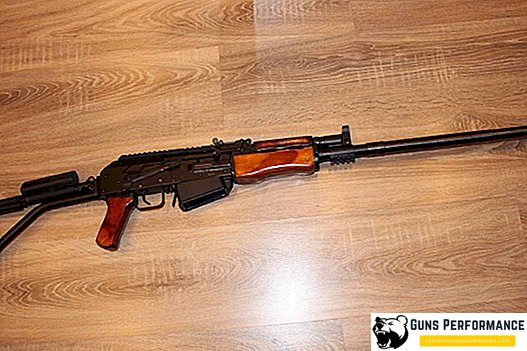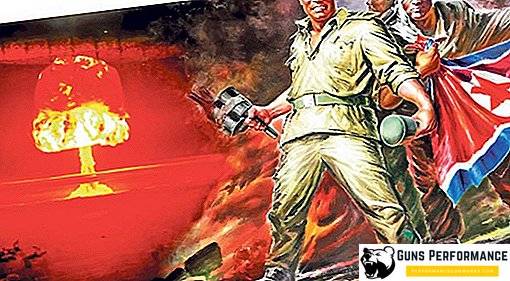
More than half a century ago, one of the bloodiest military conflicts of the second half of the last century ended - the war on the Korean Peninsula. It lasted more than three years and claimed hundreds of thousands of lives. After it, 80% of the transport and industrial infrastructure of both Korean states were destroyed, millions of Koreans lost their homes or became refugees. Legally, this war continued for many decades, since the agreement on reconciliation and non-aggression between South Korea and the DPRK was signed only in 1991.
Since then, the Korean Peninsula has remained a constant source of tension. The situation in this region is calming down, then again heating up to a dangerous degree, threatening to escalate into the Second Korean War, in which neighboring countries will inevitably be drawn, including the United States and China. The situation worsened even more after Pyongyang obtained nuclear weapons. Now every rocket or nuclear test conducted by the Korean People’s Democratic Republic causes a serious international stir. Recently, such exacerbations occur at intervals of one to two years.

In 2018, the next Korean crisis coincided with the start of work on his post as the new US President Donald Trump, who during the election campaign promised the Americans once and for all to solve the DPRK problem. However, despite the bellicose rhetoric and a significant build-up of shock forces in the region, the Americans did not dare to start a large-scale war on the peninsula. What is the reason? Why is the American army - undoubtedly the strongest on the planet today - and did not dare to start military actions?
The answer is very simple. For more than sixty years, the North Koreans have managed to create one of the strongest and most numerous armies in the world, the battle with which will become a serious test for any opponent. Today, the DPRK has a million people under arms, numerous air forces, ballistic missiles and an impressive submarine fleet.
North Korea is the last communist totalitarian state on the planet; it even surpasses the USSR of the Stalin period by the strictness of the regime. A planned economy still operates here, famine happens from time to time, dissenters are sent to concentration camps, and public executions for North Koreans are a common thing.
The DPRK is a closed country, foreigners rarely visit it, and information about the state of the North Korean economy is classified. It is even more difficult to obtain information about the North Korean army, its strength and armament.

According to experts, the DPRK army today ranks fourth (some speak of the fifth) in the world in terms of numbers. The parade of the army of the DPRK is a truly impressive sight that takes the viewer to the last century. North Korea has long been under international sanctions, which are periodically reinforced after Pyongyang conducts another rocket launch or a nuclear explosion.
The military budget of North Korea is small due to the plight of the economic situation of this country. In 2013, it was only $ 5 billion. However, over the past decades, the DPRK has been turned into one huge military camp, constantly awaiting attack from South Korea or the United States.
So, what is the strength of the current leadership of the DPRK, what are the armed forces of this country, what is the nuclear potential of Pyongyang? However, before turning to the current state of the North Korean armed forces, a few words should be said about their history.
The history of the army of the DPRK
The first Korean paramilitary units were created in the beginning of the 1930s in China. They were led by the Communists and the Koreans fought against the Japanese invaders. By the end of the Second World War, the Korean people's army had a population of 188 thousand people. One of the commanders of the army was Kim Il Sung - the actual creator of the DPRK and the first of the Kim dynasty, ruling almost half a century.
After the end of the war, Korea was divided into two halves — the north, which was under the control of the USSR, and the south, actually occupied by American troops. On June 25, 1950, the North Korean troops, having a significant superiority in manpower and equipment, crossed the 38th parallel and moved south. Initially, the campaign was very successful for the North: Seoul fell three days later, and soon the Communist forces captured up to 90% of the territory of South Korea.

Under the control of the South Korean government remained only a small area, known as the Pusan perimeter. However, the northerners could not quickly destroy the enemy, and soon the Western allies came to the aid of the South Koreans.
In September 1950, the Americans intervened in the war, surrounding and defeating the North Korean army in a matter of weeks. Only a miracle could save the DPRK from complete defeat, and it happened. In late 1950, the Chinese army of many thousands crossed the border of North Korea and drove the Americans and South Koreans far to the south. Seoul and Pyongyang returned to the control of the North.
The fighting with varying success continued until 1953, by which time the front line had more or less stabilized near the old border of the two Koreas - the 38th parallel. The turning point of the war was the death of Stalin, soon after which the Soviet Union decided to withdraw from the conflict. China, alone with the Western coalition, agreed to a truce. But the peace treaty, usually ending any armed conflict, between the DPRK and the Republic of Korea has not been signed yet.
Over the next decades, North Korea continued to build communism, its main allies were the Soviet Union and China. All this time, North Koreans have invested heavily in the development of the armed forces and the military-industrial complex. The situation in the DPRK has deteriorated significantly after the collapse of the socialist camp and the introduction of Western sanctions against the country. In 2013, during the next aggravation, the DPRK leadership broke all non-aggression treaties with its southern neighbor, and also annulled the agreement on denuclearization of the peninsula.
According to various estimates, the current strength of the DPRK army is from 850,000 to 1.2 million people. Another 4 million people are in the direct reserve; in total, 10 million people are suitable for military service. The population of the DPRK has 24.7 million people. That is, 4-5% of the population is serving in the North Korean armed forces, which can be called a real world record.

The army of North Korea is a draft, serving in it both men and women. Service life ranges from 5 to 12 years. The draft age is 17 years.
The general leadership of the North Korean power and defense sphere, according to the country's constitution, is exercised by the State Defense Committee (GKO), headed by the current leader of the country, Kim Jong-un. The State Defense Committee controls the work of the Ministry of National Armed Forces, as well as other law enforcement agencies. It is the Committee of Defense that can declare martial law in the country, mobilize and demobilize, manage reserves and the military-industrial complex. The structure of the military ministry consists of several departments: Political, Operational, and logistics support department. The direct operational control of the DPRK armed forces is carried out by the General Staff.

The armed forces of the DPRK consist of:
- Ground forces;
- The Navy;
- Air force;
- Forces special operations.
In addition, the Ministry of State Security and the Ministry of Public Security have their troops. There are also other militarized formations: the Workers 'and Peasants' Red Guards, the Youth Red Guards, various people's guards.
A large (and the best) part of the country's armed forces is deployed in close proximity to the demilitarized zone.
North Korea has a highly developed military-industrial complex. It is able to provide the country's armed forces with almost the entire range of weapons and ammunition, with the exception of combat and transport aircraft.
Ground troops
The basis of the armed forces of the DPRK is land forces. The main structural associations of the ground forces are the brigade, division, corps and army. Currently, the North Korean army includes 20 corps, among which 4 are mechanized, 12 infantry, one armored, 2 artillery and a corps providing defense of the capital.

The figures regarding the number of military equipment in service with the ground forces of the DPRK army are very different. In the event of war, North Korean generals will be able to count on 4.2 thousand tanks (light, medium and main), 2.5 thousand armored personnel carriers and 10 thousand artillery guns and mortars (according to other data 8.8 thousand).
In addition, a large number of multiple rocket launcher systems (from 2.5 thousand to 5.5 thousand units) are in service with the ground forces of the DPRK. The North Korean armed forces have operational and tactical as well as tactical missile systems, their total number is 50-60 units. The DPRK's army is armed with more than 10,000 anti-aircraft artillery systems and about the same MANPADS.
If we talk about armor, most of it is represented by obsolete Soviet models or their Chinese copies: T-55, T-62, PT-85, Pokphunho tanks (local T-72 tanks), BMP-1, BTR-60 and BTR-80, BTR-40 (several hundred pieces) and VTT-323, created on the basis of the Chinese BMP VTT-323. There is information that the Korean people's army still uses even the Soviet T-34-85, preserved from the time of the Korean war.

The North Korean ground forces have a large number of different anti-tank missile systems, most of them are old Soviet designs: "Baby", "Bumblebee", "Fagot", "Kommersant".
Air Force
The strength of the Air Force of the Korean People’s Army is about 100 thousand people. The service life in the Air Force and Air Defense Forces is 3-4 years.

The DPRK Air Force consists of four commands, each of which is responsible for its own direction, and six air divisions. The air force of the country has 1.1 thousand aircraft and helicopters, which makes them one of the largest in the world. The North Korean Air Force has 11 air bases, most of which are located near the South Korean border.
The basis of the Air Force's aviation fleet is made up of outdated Soviet or Chinese aircraft: the MiG-17, MiG-19, MiG-21, as well as the Su-25 and MiG-29. The same can be said about combat helicopters, the vast majority of them are Soviet Mi-2, Mi-4, Mi-8 and Mi-24 vehicles. There are also 80 Hughes-500D helicopters.
North Korea has a fairly powerful air defense system, which includes about 9 thousand different artillery anti-aircraft systems. True, all North Korean air defense missile systems are Soviet complexes of the 60s or 70s of the last century: C-75, C-125, C-200, CUB air defense system. It should be noted that there are a lot of these complexes in North Korea (about a thousand units).

Naval forces
The North Korean Navy has a population of approximately 60 thousand people (for 2012). It is divided into two parts: the Eastern Sea Fleet (operating in the Sea of Japan) and the Western Sea Fleet (intended for solving combat missions in the Gulf of Korea and the Yellow Sea).

Today, the North Korean Navy includes about 650 ships, their total displacement exceeds 100 thousand tons. North Korea has a fairly powerful submarine fleet. It consists of about a hundred submarines of various types and displacement. The submarine fleet of the DPRK is capable of carrying ballistic missiles with a nuclear warhead.
Most of the naval personnel of the DPRK Navy are represented by boats of various kinds: rocket, torpedo, artillery and landing craft. However, there are larger ships: five corvettes with guided missiles, nearly two dozen small anti-submarine ships. The main task of the naval forces of North Korea is to cover the coast and coastal zone.

Special operations forces
It is likely that the DPRK has the most numerous Special Operations Forces in the world. Various sources estimate their strength from 80 to 125 thousand troops. The tasks of the forces include reconnaissance and sabotage operations, counteraction to special subdivisions of the USA and South Korea, organization of a partisan movement in the enemy's rear.
The DPRK MTR includes reconnaissance units, light infantry and sniper units.

Rocket troops
In 2005, the DPRK officially announced the creation of its own nuclear weapons. Since then, one of the priorities of the country's military-industrial complex has been the creation of missiles capable of carrying a nuclear warhead.
Part of the missile weapons of the DPRK armed forces are old Soviet missiles or their copies. For example, the Hvason-11 or Tox is a tactical missile, a copy of the Soviet Tochka-U with a flight range of 100 km, or the Hwaseong-5 is an analog of the Soviet R-17 with a flight range of 300 km.

However, most North Korean missiles are self-developed. The DPRK makes ballistic missiles not only for the needs of its army, but also actively exports them. Foreign experts believe that over the past 20 years, Pyongyang has sold about 1.2 thousand ballistic missiles of various types. Among its buyers are Egypt, Pakistan, Iran, the United Arab Emirates, Syria and Yemen.
Today, the armed forces of the DPRK are:
- Short-range missile "Hwason-6", commissioned in 1990. It is an improved modification of the Hwaseong-5 missile with a range of up to 700 km. It is believed that currently between 300 and 600 such missiles are in service;
- Medium range missile "Hwason-7". Adopted in 1997, can hit targets at a distance of 1,300 km;
- The medium-range rocket "No-Dong-2", it was put into service in 2004, the range of its flight - 2 thousand km;
- The medium-range ballistic missile Hvason-10. It has been in service since 2009, the flight range is up to 4.5 thousand km. It is believed that today Pyongyang can have up to 200 such missiles;
- Intercontinental ballistic missile "Hvason-13" with a range of up to 7.5 thousand km. It was first shown at the parade in 2012. "Hwason-13" can reach the territory of the United States, which, of course, is of great concern to the Americans. It should also be noted that the DPRK is a member of the club of space states. At the end of 2012, an artificial satellite, Kwanmenson-3, was launched into Earth orbit.





